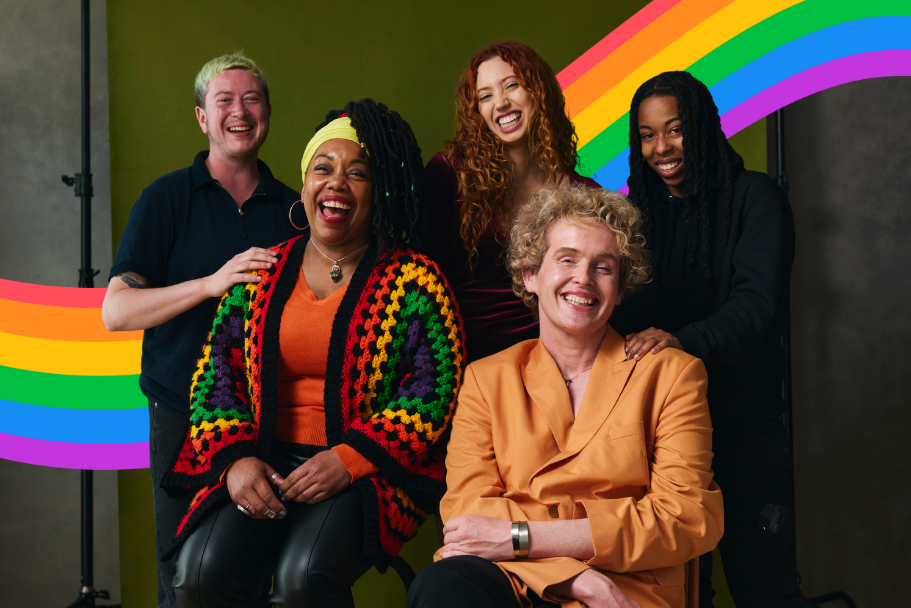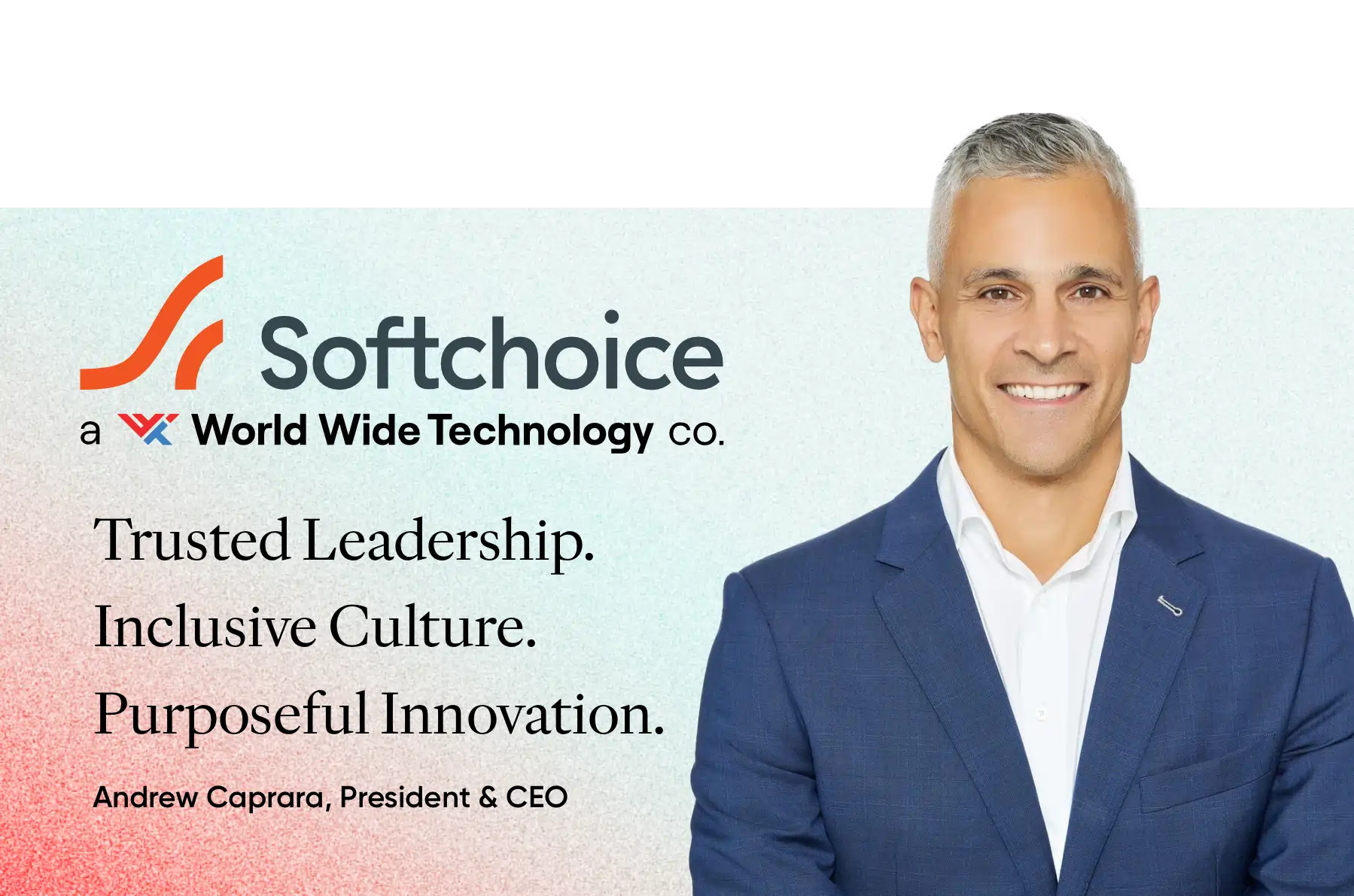
Company Culture, Employee well-being
Article Highlights
- Fairness Gap in Canadian Workplaces: At leading Great Place to Work® Certified™ companies, 97% of employees say people are treated fairly regardless of gender or sexual orientation—compared to only 77% at average Canadian workplaces (Great Place To Work® 2021 Global Employee Engagement Study).
- Retention Risks Linked to Inclusion: 34% of LGBTQ+ employees have left a job because they felt the environment wasn’t accepting, reinforcing that non-inclusive workplaces can directly impact talent retention (Catalyst).
- Visibility Drives Trust: LGBTQ+ employees seek more than surface-level representation—they want to see authentic inclusion reflected in leadership, policies, and everyday decisions that affect their work.
- Psychological Safety Is Still Lacking: Half of LGBTQ+ employees are not out to their supervisors, underscoring a continued need for safer, more inclusive workplace cultures (Catalyst).
- Small Actions Shape Belonging: Respect in meetings, inclusive language, and visible allyship influence whether LGBTQ+ employees feel safe, valued, and able to contribute fully—impacting both engagement and retention.
Creating a workplace where everyone feels safe, respected, and supported isn’t just good practice—it’s essential to building a culture rooted in trust. For LGBTQ+ employees, inclusion isn’t about occasional recognition or performative statements. It’s about having the same opportunity to thrive as anyone else—free from assumptions, bias, or the need to hide who they are.
At its core, this is about listening to your people, making space for their voices, and ensuring that inclusion is a lived experience—not just a stated value.
Inclusion Isn’t a Statement—It’s a Daily Experience

While diversity commitments may exist on paper, inclusion is something employees experience—or don’t—every day. LGBTQ+ employees want to be able to show up authentically, participate equally, and know they are valued for who they are.
In Great Place to Work® Canada's work with organizations across sectors, one message is consistent: trust is built through action. When people feel psychologically safe—when they know they won’t be judged or sidelined for who they are—they are more likely to engage fully, speak up with ideas, and contribute meaningfully to their teams.
On the other hand, if people feel the need to hide parts of themselves or navigate silent barriers, they are more likely to disengage—or leave altogether.
What LGBTQ+ Employees Are Asking For
1. Fair Access to Opportunity
One of the clearest signals of inclusion is whether people believe they have a fair chance to grow. LGBTQ+ employees often look closely at whether promotion, recognition, and development opportunities are shared transparently and equitably.
Our employee survey helps organizations understand how different employee groups perceive access to advancement and feedback. These insights can identify gaps that may not be visible at the surface but impact daily experience in significant ways.
Ensuring fairness doesn’t just mean having policies in place—it means regularly assessing whether people experience those policies equitably.
At the top Great Place to Work® Certified™ companies in Canada, 97% of employees agree that people are treated fairly regardless of their gender or sexual orientation. In contrast, only 77 per cent of employees at average Canadian workplaces share this view (source: Great Place To Work® 2021 Global Employee Engagement Study). This highlights the gap between intent and experience—and shows how high-trust workplaces turn values into reality through consistent day-to-day practices.
2. Authentic Representation
Representation is about more than visibility—it’s about trust. LGBTQ+ employees want to see their experiences reflected in leadership and decision-making, not just during special campaigns or themed months. This includes seeing out leaders in senior roles, inclusive policies applied consistently, and hiring practices that welcome people across gender identities and sexual orientations.
Leadership development tools support organizations in understanding how leadership behaviour is perceived across teams—providing the feedback necessary to create truly inclusive environments.
3. Visible and Accountable Leadership

Words of support are important—but what matters more is follow-through. Employees look to leaders not only to speak about inclusion but to model it through decisions, behaviours, and practices. This includes using inclusive language, correcting exclusionary comments or actions, and participating in equity-building efforts across the organization.
Data gathered through our Trust Index™ Employee Feedback Survey provides organizations with insight into how employees perceive leadership credibility, fairness, and respect—key components of trust.
4. Day-to-Day Respect and Belonging
For many LGBTQ+ employees, the day-to-day experience matters more than high-level diversity statements. Respect in meetings, inclusive language, and colleagues who are educated about identity and pronouns all make a difference. Microaggressions—intentional or not—can chip away at a sense of belonging quickly.
Organizations that regularly run employee feedback surveys or engage in culture consulting are better positioned to track these experiences and respond before issues escalate.
Workplace inclusion strongly affects retention for LGBTQ+ employees. According to Catalyst, 34 per cent of LGBTQ+ employees have left a job because they felt the work environment was not accepting of them, illustrating how non-inclusive cultures drive valuable talent away. Additionally, half of LGBTQ+ employees in the U.S. are not out to their supervisors, which often indicates a lack of psychological safety. These data points reinforce the article’s argument that fostering a genuinely inclusive and supportive environment is essential to keeping LGBTQ+ employees engaged and reducing costly turnover.
In fact, as shared in Great Place to Work® article, In Their Own Words: LGBTQ+ Employees Share Their Work Experiences, some LGBTQ+ team members express that being able to bring their authentic selves to work is part of what makes their company culture feel meaningful. These voices remind us that inclusion is not only about removing barriers but also about actively creating environments where people feel seen and valued.
What Organizations Can Do Now

1. Start by Listening:
No inclusion strategy should start with assumptions. The most effective organizations begin by asking people how they experience the workplace and what matters to them. A research-backed employee feedback surveys offers confidential, nuanced insight into how different groups perceive inclusion, fairness, and respect.
2. Use Your Data to Identify Gaps:
Once you have data, use it. Identify which employee groups report different experiences and explore why. This may include gaps in leadership support, unclear policies, or missed opportunities to build connection.
Culture consulting services also help organizations interpret their data and create realistic, meaningful actions that improve trust across the board.
3. Celebrate What You Do Well—and Keep Going:
Acknowledging what’s working is just as important as improving what isn’t. For organizations where LGBTQ+ employees report positive experiences, it's essential to celebrate that progress while continuing to strengthen and sustain it.
Recognition through Great Place to Work Certification™ helps organizations highlight the employee experiences they’ve built—while signalling to others that inclusion is a priority, not a checkbox.
Final Thoughts
Building a truly inclusive workplace doesn’t happen by chance—it takes listening, consistency, and a willingness to act on what employees need. For LGBTQ+ team members, trust is shaped by everyday experiences: being treated fairly, represented authentically, and respected without exception. When organizations pay attention to these moments, they don’t just create better workplaces for LGBTQ+ employees—they create stronger cultures for everyone.
"The question isn’t whether inclusion matters. It’s whether we’re ready to make it real—together, every day."
Tools & Resources
- Diversity and Inclusion: This resource offers data-informed strategies to identify gaps in experience and build equitable workplace practices. It supports the article’s call for organizations to move beyond statements and build inclusive cultures through consistent action.
- Trust Index™ Employee Feedback Survey: Designed to measure employee experience and inclusion across diverse identities, this tool helps organizations assess how LGBTQ+ employees experience fairness, belonging, and safety—key themes discussed in the article.
- Culture Consulting: Great Place to Work® Culture Consulting helps decode employee feedback and translate insights into strategic, inclusive actions. This aligns with the article’s emphasis on turning feedback into meaningful change.
- Leadership Development: This program builds inclusive leadership behaviours such as credibility, fairness, and respect—supporting the article’s point that representation and modelling inclusive actions are essential to building trust.
Feedback
We value your feedback! Your insights are crucial to helping us create meaningful content. Did the strategies in this article inspire new ways to support LGBTQ+ inclusion in your organization? Are there specific challenges you'd like us to address? Share your suggestions or ideas with us. Together, we can develop resources that truly make a difference. Have feedback? Fill out this form by clicking here.
Get Certified
Want to know how your people feel about LGBTQ+ inclusion in your workplace? Get Certified today and learn the answer to this question and gain many more insights along the way.






